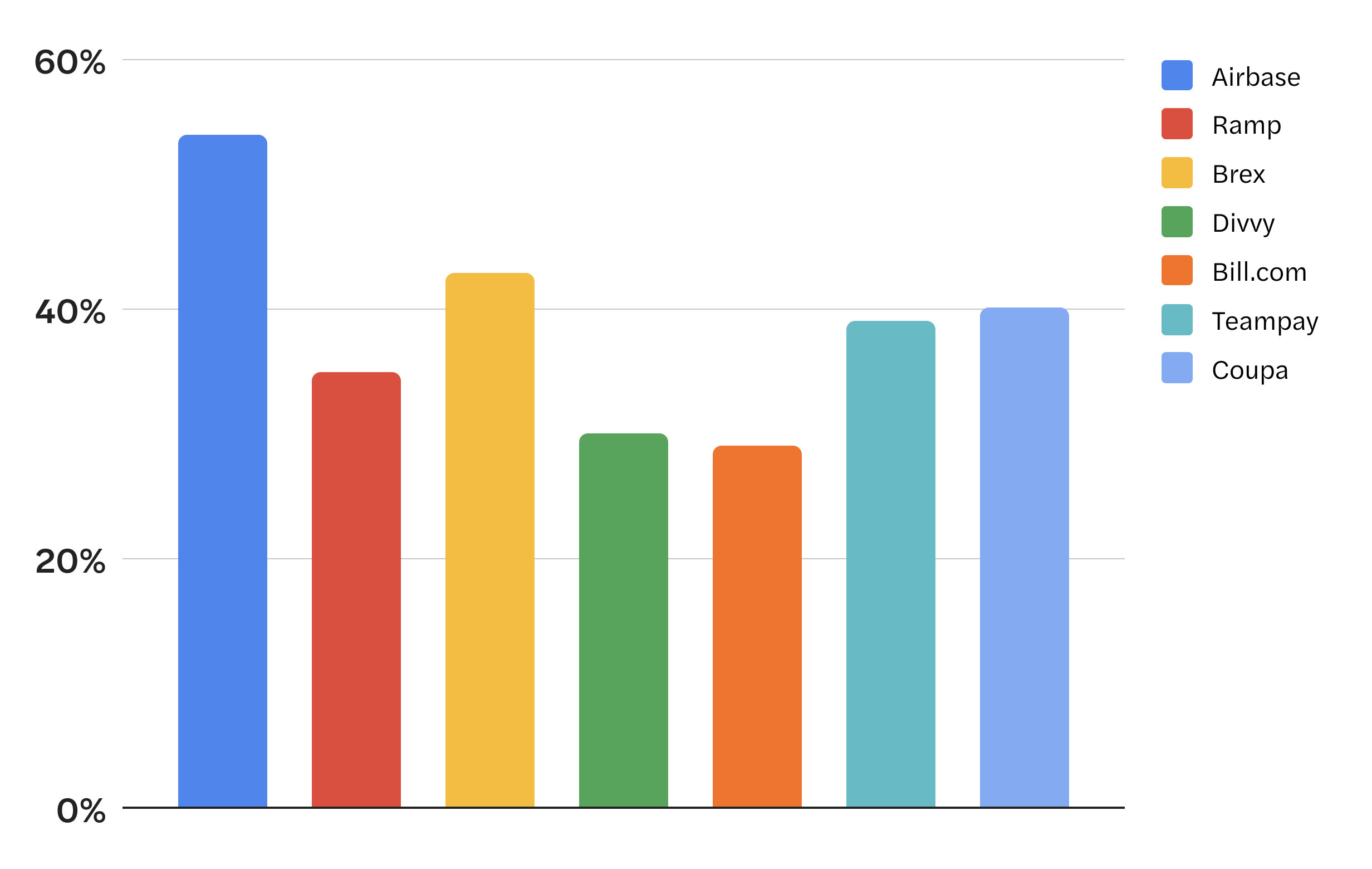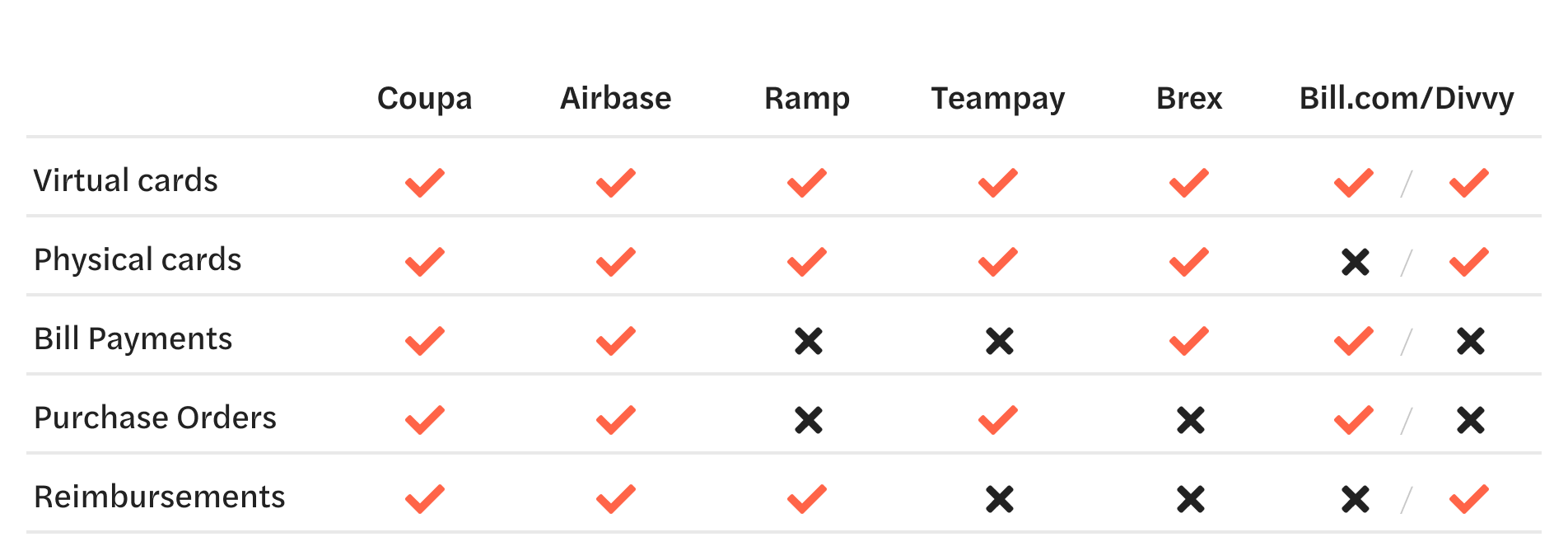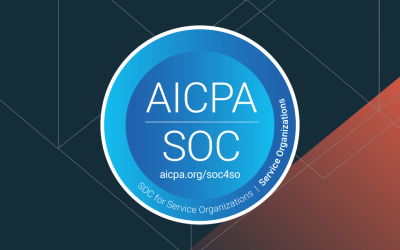So, you want to implement the best spend management platform for your company. Of course, you’ll read some third-party reviews — if studies are correct, you’ll read about 10, which is probably a good sampling to help you decide who to talk to. I was a bit overzealous and actually read over 1,000 spend management sector reviews. Yes, I realize it was a lot, but now that I’m finished, I thought I’d share my top findings for those of you with way more important things to do with your time.
My conclusion? It all comes down to usability. The most consistently named element that leads a reviewer to either love or leave a software product is whether or not it is easy to use.
The importance of usability: what the numbers say.
Overall, newer companies, like Brex and Airbase, have more positive reviews regarding UI than legacy systems, like Bill.com. The chart below shows the percentage of reviews that said something positive about a platform’s user experience.*

Percentage of positive UI/UX reviews
Overall, more than 48% of the reviews I read specifically mention usability in either a positive or a negative way. Of course, no one product received entirely positive — or negative — feedback. Depending on your needs, another user’s negative experience could be a positive one for you. For example, some users found the highly engineered Coupa spend management platform tricky to navigate, but many, particularly those from larger companies, praised its UI and overall ease of use for the more complex work that they needed to accomplish.
What makes a spend management system easy to use?
Adopting a spend management solution requires some time investment up front to learn a new way of approaching AP. If a platform is frustrating and confusing, that learning curve becomes steeper, and the whole process may seem like a waste of time. Ultimately, however, freeing up time with automation helps finance professionals make more important contributions to their companies.
The best spend management platforms have four key elements that contribute to a positive user experience. I’ve unabashedly added quotes from Airbase’s G2 reviews for each element to show you what is meant by them.
Simplicity: “Spend owners are enabled to do what they need to do without bogging them down with too much process.”
Easy to learn: “They have an easy to use tool that didn’t require much training and has received very positive feedback from all users.”
Convenience: “I particularly love the convenience of the mobile app — each time I make a purchase, the app prompts me to select the appropriate category and attach a receipt.”
Intuitiveness: “I really love the streamlined design, which is very easy to use and intuitive, yet very flexible to adapt to your company’s process flows.”
Consolidation: the hidden ingredient for a useable solution.
The factors above create a positive user experience, but I noticed another underlying theme. Reviewers consistently link the ability to perform multiple functions in one platform with ease of use. Moreover, they single out the time saved, the increased adoption by other employees, and the reduced time-to-close — all enabled by consolidation.
These reviews struck a chord with regards to time efficiency through a single platform:
“Airbase has helped my lean team to create efficiencies in bill payments and expense management. Having these functions managed within the same easy to use tool has helped reduce the back and forth we experienced when they were separate, and it’s easier to explain processes to the rest of the company.”
“Airbase consolidates virtual cards, physical cards, and bill payments in a simple platform where everything is pre-approved and monitored. The best thing about it though is that it allows a continuous close process. I literally don’t touch it at the end of the month, because all journal entries and classification rules are done the moment someone requests a spend!”
An analysis of which spend management systems truly consolidate all non-payroll spend adds another dimension to the usability review stats.

Note: Bill.com acquired Divvy in May 2021, but the products are separate solutions at the time of writing
Some of the highest usability ratings were for fully consolidated platforms, suggesting that it’s not just an intuitive interface or well-thought design that makes a product usable, but the completeness of its offerings.
When you do need help: the importance of customer service.
I admit that I found the negative reviews more interesting than the positive ones, and according to a LinkedIn report, I am not alone. On average, a negative review receives two to three more clicks than a positive one. One of the most common topics for the negative reviews I read is customer support. Interestingly, however, reviewers often post a scathing review after just one bad customer service experience. In contrast, a positive review about a platform’s overall UI is typically based on an extended period of use.
We’ve all experienced moments when we needed guidance, but ran into a brick wall. If automation makes a platform easier to use, customer service is the human element that follows through. So pay attention to comments on customer service — you never know when you will need it, and you don’t want to discover that a vendor has less-than-stellar support when you’re in the middle of an emergency. Fortunately, many vendors’ customer support teams earn consistently excellent reviews. This is one of my favorites for Airbase:
“The support I received from the Airbase team has been phenomenal. Knowing that they are ready to help me at any time gives me a lot of trust in Airbase as a SaaS provider.”
Putting reviews into perspective.
Reviews play an increasingly important role in buying decisions, particularly in a rapidly evolving market like spend management. Some other key findings from the LinkedIn report include:
- 70% of buyers talk about potential purchases with peers. (The finance professionals’ Off the Ledger Slack channel has a very active #vendors-and-software channel for exactly this purpose.)
- 85% of technology decision-makers read up to 10 reviews before purchasing.
- The influence that reviews wield in purchasing decisions increases with the price of a purchase.
However, reading a lot of user reviews can feel overwhelming (I discovered this the hard way). Although reviews are a great way to gather initial information in the early stages of a purchasing decision, there’s no substitute for actually test-driving a piece of software. If you’d like to experience Airbase’s usability first-hand, schedule a demo with us.
*Note that these figures represent a snapshot of a specific moment in time, and new reviews are always being added. I also counted only specific UI mentions. If a review said “I love this platform,” it wasn’t counted. But if a review said, “I love this platform because it is so easy to use,” or “I love the intuitive UI,” it was counted.
 Jira Integration – Streamline Your Workflows
Jira Integration – Streamline Your Workflows  Ironclad Integration – Simplify Legal Operations
Ironclad Integration – Simplify Legal Operations  Asana
Asana 




